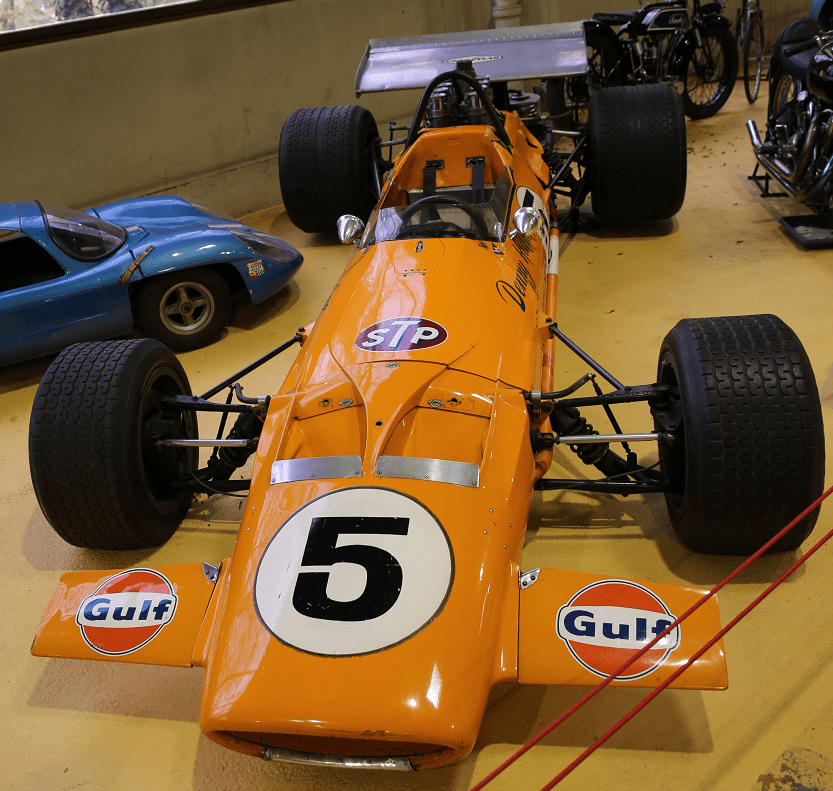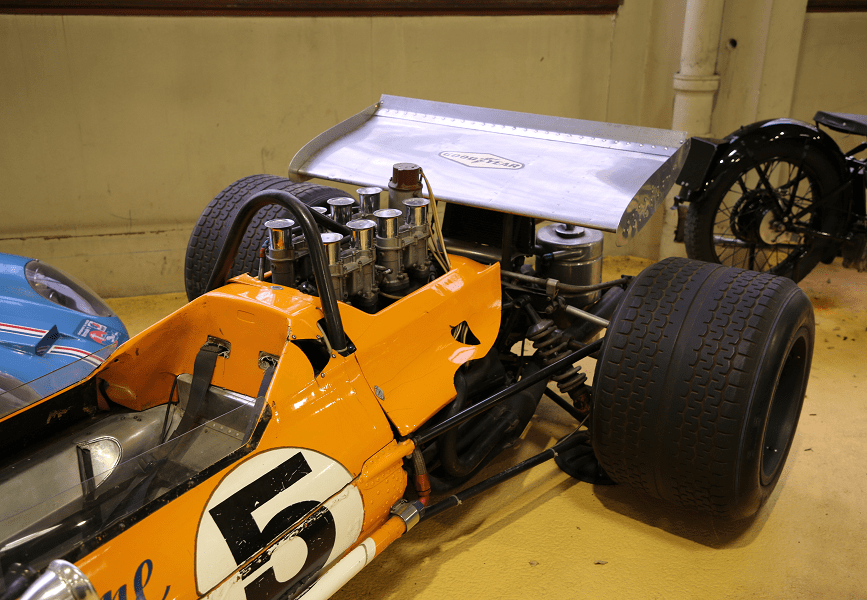The British McLaren Monoplace Formula 1 Type M7A №2 from 1968, Chevrolet motor V8, 4980 cc, 540 HP, five speeds, 540 kg, 320 km/h
The McLaren M7A and its M7B, M7C and M7D variants were Formula One racing cars, built by McLaren and used in the world championship between 1968 and 1971. After two relatively unsuccessful years of Formula One competition, the M7A was used to score McLaren’s first win at the 1968 Belgian Grand Prix.
Designed by Robin Herd and Gordon Coppuck, the M7A was the first McLaren to be powered by the Cosworth DFV engine, which went on to be used by the team until 1983. The M7B had outboard fuel tanks and the M7C a modified chassis, whilst the M7D was powered by an Alfa-Romeo engine.
The M7A made its Grand Prix debut at the second race of the 1968 world championship. After its victory in Belgium, it took another two wins that year, helping to place McLaren second in the Constructors’ Championship.
The M7A was an open-wheeled single-seater with a mid-mounted engine driving the rear wheels. The chassis was a bathtub-type (i.e. open-topped) monocoque made from 22-gauge aluminium alloy and 20-gauge magnesium alloy panels glued and riveted together and to three steel bulkheads. The monocoque terminated behind the driver’s seat and the engine was used as a stressed part of the chassis, bolted directly to the rearmost bulkhead. The gearbox was then attached behind the engine, and the rear suspension – consisting of lateral top links, twin radius arms and reversed wishbones– attached to the gearbox and the rear bulkhead. The front suspension – upper and lower lateral links and radius arms – and the steering column were attached to the two bulkheads in front of the driver. Coilover springs and Koni dampers mounted outside of the body were employed front and rear.













